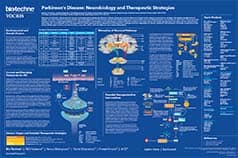Calcium Channels
Calcium is a vital signaling molecule that mediates muscle contraction, neurotransmission, gene expression and more. There are two main types of calcium channels; voltage-gated calcium channels, which open in response to changes in membrane potential and ligand-gated calcium channels, such as IP3 receptors, store operated calcium channels and ryanodine receptors, which are activated by ligand binding.
Calcium Channel Target Files
Multiple diseases are caused by disruption of normal calcium channel function. Inherited calcium channelopathies include nervous system disorders, such as X-linked night blindness and hemiplegic migraine, muscloskeletal disorders, such as hypokalemic periodic paralysis and malignant hyperthermia, and cardiovascular disorders, including ventricular cardiomyopathy and familial polymorphic ventricular tachycardia.
Literature for Calcium Channels
Tocris offers the following scientific literature for Calcium Channels to showcase our products. We invite you to request* your copy today!
*Please note that Tocris will only send literature to established scientific business / institute addresses.
Parkinson's Disease Poster
Parkinson's disease (PD) causes chronic disability and is the second most common neurodegenerative condition. This poster outlines the neurobiology of the disease, as well as highlighting current therapeutic treatments for symptomatic PD, and emerging therapeutic strategies to delay PD onset and progression.
